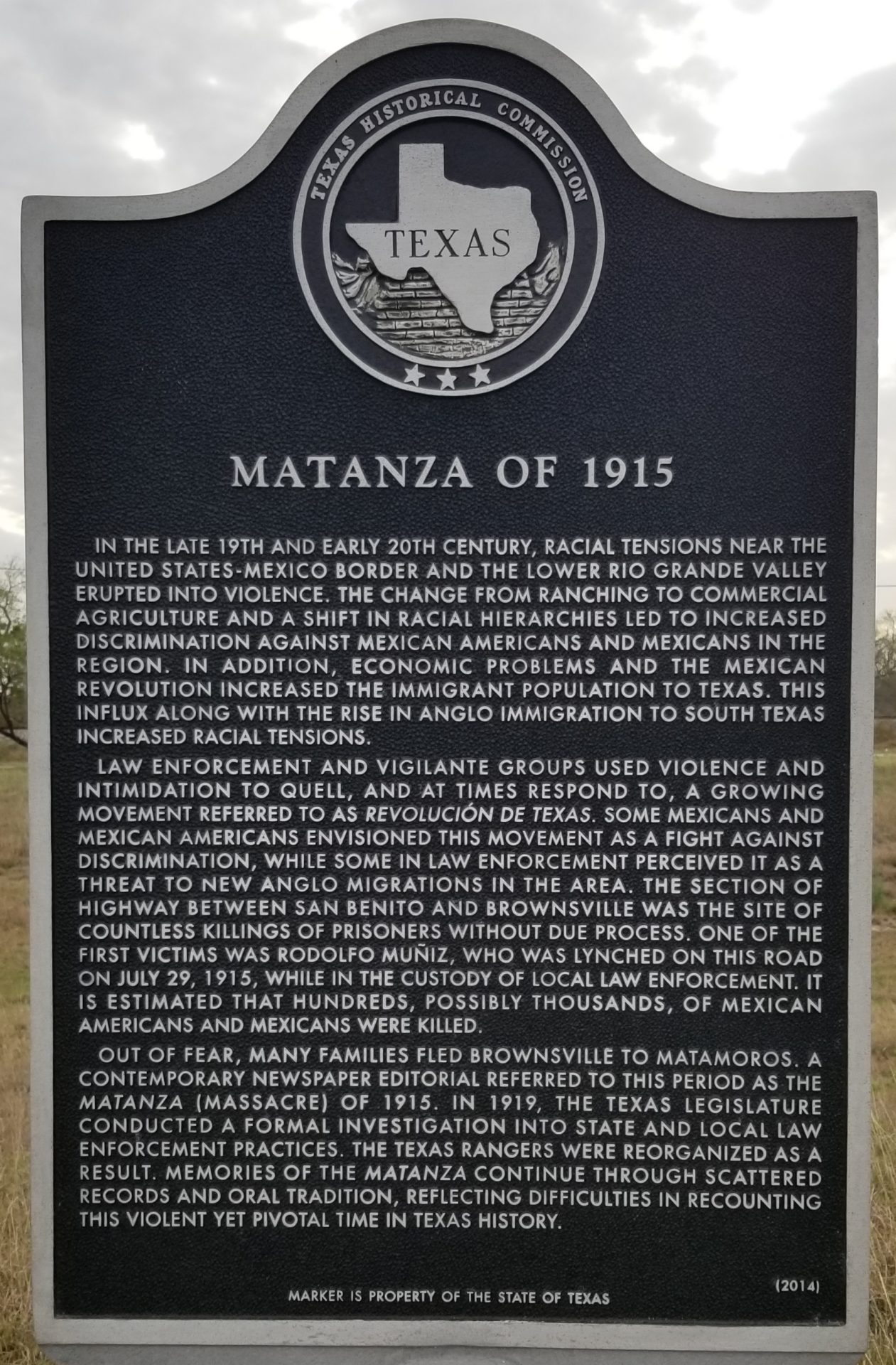|
Only have a minute? Listen instead
Getting your Trinity Audio player ready...
|

SAN BENITO — For four years, Ricardo Madrigal has been leading a growing group of marchers to a remote state historical marker honoring countless victims killed in this area during one of Texas’ darkest periods.
On Sunday, he and his wife Janie Alegria are planning to lead about 30 residents to the barren highway rest stop just south of town where the Texas historical marker commemorates the Matanza of 1915.
“It’s my labor of love to bring attention to San Benito’s historical significance as the site of a lot of killings of Mexicans and Mexican-Americans without due process,” Madrigal, an attorney, said Friday.
The ceremony marks the fourth annual Dia de los Muertos Caminata, a 3.5-mile march in honor of the hundreds of victims whose lynchings and executions at the hands of the Texas Rangers were left out of history books.
“I grew up in San Benito,” Madrigal said in an interview. “This part of history was never taught to us. We don’t know our own history. I’m just trying to bring attention to a part of my history. It’s part of correcting the historical record.”
Growing ceremony
In 2020, Madrigal led his first march, held on the first Sunday of November, in observance of Dia de los Muertos, or the Day of the Dead, a tradition steeped in Mexican culture.
“We do it as part of the Dia de los Muertos’ observance,” he said. “It’s a celebration of life.”
This year, Madrigal’s planning to lead about 30 residents on the growing march.
“That’s a lot more than we had in past years,” he said. “It’s just been through word of mouth.”
Since San Benito’s first ceremony, Rogelio Nunez has joined Madrigal on the solemn march commemorating victims of the so-called “Bandit Wars” which raged along the Mexican border from about 1915 to 1920.
“It’s the idea of documenting a history that has been erased from the history books,” Nunez, executive director of Proyecto Libertad, an immigrant rights group in Harlingen, said. “It’s very important to bring it back where it belongs.”
History of struggle
The history is part of Mexican-Americans’ struggle in the United States, Nunez said.
At the close of the Mexican-American War in 1848, the United States took in land stretching to the west coast — what was Mexicans’ ancestral home, he said.
By 1915, the U.S. Army had stationed 50,000 troops across the Rio Grande Valley to fight what became known as the Bandit Wars, Nunez said.
“Any resistance, you were labeled a bandit,” he said. “Everybody needs to know that these things happened and how the community evolved.”
From about 1915 to 1920, the Texas Rangers, with Harlingen as their southern headquarters, killed “hundreds, probably thousands” of victims, Madrigal said.
This year, Madrigal launched a website, Dia de los Muertos Caminata, documenting some of the history.
“While the Texas Rangers have been revered as an exemplar law enforcement force that made the state and the Rio Grande Valley a safe place to live, its dark side has been purposely ignored or swept under the rug,” the website states.
Across the area, Mexican-Americans knew the Rangers as “los Rinches,” it states.
“In that era, Rangers were supposed to take jailed prisoners to Brownsville, where the courts-at-law were located, to receive a fair trial to determine their guilt or innocence,” the website states. “However, because the Rangers presumed the guilt of their Mexicano-American prisoners, in an untold number of instances, the Rangers shot or lynched them in San Benito in order to avoid the long, arduous trek to Brownsville.”
Marker unveils Texas’ darkest era
At 9 a.m. Sunday at Heavin Memorial Park, Madrigal’s planning to lead about 30 residents on the 3.5-mile march along Business 77 to the Interstate 69 frontage road, where the state history marker stands at a highway rest stop off Exit 16.
“It’s a recognition of that history,” Madrigal said.
At the foot of the marker, the marchers plan to lay a wreath in honor of the victims of the Matanza of 1915, he said.
“The section of highway between San Benito and Brownsville was the site of countless killings of prisoners without due process,” the marker reads.
“Law enforcement and vigilante groups used violence and intimidation to quell, and at times respond to, a growing movement referred to as Revolucion de Texas. Some Mexicans and Mexican-Americans envisioned this movement as a fight against discrimination, while some in law enforcement perceived it as a threat to new Anglo migrations in the area.”
“It is estimated that hundreds, possibly thousands, of Mexican Americans and Mexicans were killed,” the marker states. “In 1919, the Texas Legislature conducted a formal investigation into state and local law enforcement practices. The Texas Rangers were reorganized as a result.”




